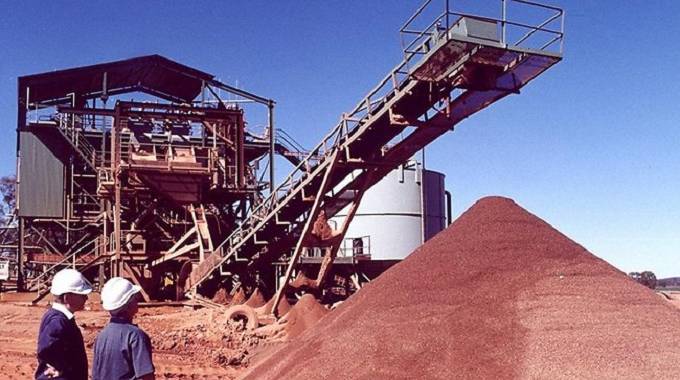High prospects for Kamativi lithium, tantalum

Senior Business Reporter
RESOURCES group, Galileo Resources, says it has sent a total of 1 661 samples at its Kamativi Lithium Project comprising rock chips, stream sediments and soil samples to an assay laboratory for a range of elements, including lithium, tin and tantalum.
A total of 5 326 samples were collected.
Its reconnaissance mapping and sampling programme over Kamativi has identified four target zones with potential for pegmatite-hosted lithium, tin and tantalum.
In a latest update, the United Kingdom-based mining house said the drilling stage will be undertaken if results of laboratory analysis are appropriate.

Mounds of lithium stone ready for transporting
Chairman and chief executive officer, Colin Bird, said the firm has meticulously sampled the pegmatites over four target zones across Kamativi lithium project licence area with the mission of identifying lithium occurrences, as well as testing the significant potential for tin and tantalum.
“We await the results of laboratory analysis and, if appropriate, we will aim to progress confirmed prospects to drill testing stage,” he said.
“We also have a substantial number of additional samples in storage for analyses, depending on the results of the current batch.
“The prospects for lithium remain strong and Zimbabwe is an emerging source of this new age metal.”
Due to the emerging electric motor vehicle industry, there is increased international demand for the lithium mineral known as “white oil”, which is used for manufacturing batteries.
Zimbabwe is recognised as one of the most prospective countries in Africa for pegmatite-hosted lithium.
Another lithium project that is fast gaining traction is the Zulu Lithium project in Fort Rixon, Matabeleland South, which is being implemented by the United Kingdom-listed Premier African Minerals.
It is generally regarded as potentially the largest undeveloped lithium bearing pegmatite in Zimbabwe, covering a surface of about 3,5 square kilometres, which are prospectively for lithium and tantalum mineralisation.
It produces a rare high value spodumene, a rock that has very high mineralisation of lithium. Spodumene is a battery grade product, which is key for the future of electric cars.
As part of the update highlights, Galileo Resources said possible visual identification of spodumene and petalite mineralisation by its field team in rock chip samples from one site will require laboratory confirmation. The project area comprises exploration licence EPO 1782 covering an area of 520sq km.
Galileo has a current interest of 29 percent in the project, held through its interest in BC Ventures, along with an option to earn an additional 51 percent interest through spending a combined total of $1,5 million on exploration and evaluation in the project area and over the Bulawayo gold-nickel property by January 21, 2024.
Information gleaned from the firm’s website, the Kamativi Lithium Project lies on the Kamativi Belt directly adjacent to, and along strike from the historic Kamitivi tin-tantalum mine, which operated from 1936 to 1994.
Little exploration has been carried out on the licence area in the past 25 years and there is very good historical data available to advance exploration for lithium, it added.
The licence area encloses extensions and splays of the Kamativi Tin Mine host unit, including mapped pegmatites. It has been reported that there are old tin-fluorite workings within the Sinamatella property.








Comments